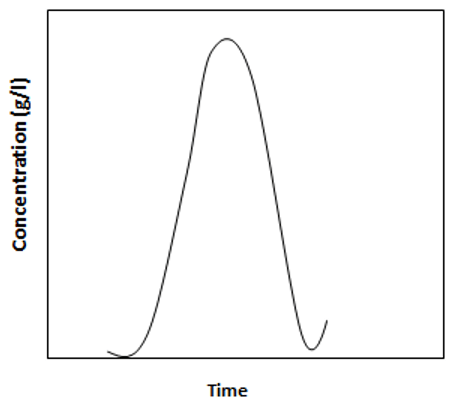This set of Bioseparation Science Multiple Choice Questions & Answers (MCQs) focuses on “Hydrodynamic Chromatography”.
1. Which chromatography is mainly used for separation of large macromolecules and particles?
a) Hydrodynamic
b) Binary
c) High pressure
d) Low pressure
View Answer
Explanation: The hydrodynamics chromatography is mainly used for separation of large macromolecules and particles as the solute having large appears in the column, effluent elutes as a peak earlier than the smaller one.
2. Which chromatography is similar to hydrodynamic chromatography?
a) Hydrodynamic
b) Size exclusion
c) High pressure
d) Low pressure
View Answer
Explanation: Size exclusion chromatography is the chromatography technique that is similar to hydrodynamic chromatography as it is also based on the separation through size of the particles. The size exclusion chromatography uses packed bed column for separation and hydrodynamic chromatography uses open tubular capillary column for the separation of particles.
3. What is the significance of the given diagram?

a) Binary
b) High pressure
c) Low pressure
d) Hydrodynamic
View Answer
Explanation: The diagram shows the principle of the hydrodynamic chromatography. In the given diagram, the mobile phase flows through the column in a laminar form and therefore the distribution of velocity is parabolic.
4. The mobile phase of the hydrodynamic chromatography flows in the ____
a) parabolic pattern
b) hyperbolic pattern
c) streamline pattern
d) flow pattern
View Answer
Explanation: The streamline pattern gives a basis of separation of the particles based on the size of the particles to be separated in the hydrodynamic chromatography.
5. In hydrodynamic chromatography, the pulse of two different solutes in the column align in ___
a) streamline
b) parabola
c) hyperbola
d) slow
View Answer
Explanation: In hydrodynamic chromatography, when the pulse of solutes one pulse larger than the other pulse is subjected in the column, these pulses quickly align themselves along the different streamlines of the velocity.
6. The larger solute in hydrodynamic chromatography are ___
a) larger exclusion
b) smaller exclusion
c) medium exclusion
d) no exclusion
View Answer
Explanation: The larger solute in in hydrodynamic chromatography are of smaller exclusion circle that remains closer to the center but the solute that is smaller than the larger exclusion circle have greater access to the streamlines closer to the wall.
7. In hydrodynamic chromatography, the average velocity of smaller solute is ___
a) medium
b) high
c) low
d) nil
View Answer
Explanation: In hydrodynamic chromatography, the average velocity of smaller solute is lower than that of the larger solute and hence, the larger solute appears in the column as effluent of the peak first then the other smaller particles.
8. What is the significance of the given diagram?

a) Chromatogram of solute
b) Chromatogram of solvent
c) Graphical representation of concentration
d) Graphical representation of time
View Answer
Explanation: The chromatogram of a solute that represents the chromatographic column showing column of 30cm long and it represents the flow rate of 1.5min.
9. The van Deemter plot for an antibiotic obtained with a 1m long chromatographic column having a retention time of 1min and width of the column to be 2m. Calculate the height of theoretical plates of the column.
a) 0.2
b) 0.3
c) 0.4
d) 0.5
View Answer
Explanation: The height of the column H = \(\frac{L}{N}\) where, N is the number of theoretical plates and L is the length of the column. N = 16\((\frac{t_R}{w})^2\) N = 16\((\frac{1min}{2m})^2\) = 2 and the height of the column H = \(\frac{1m}{2}\) = 0.5 m.
10. A chromatogram obtained using a 30 cm long gel-filtration column obtained values, Retention time of 2 minutes, distribution coefficient is 5, width of the column is 4 and the voidage fraction is 0.3. Calculate the different retention time where the solutes are separated in the column.
a) 22.3
b) 23.3
c) 25.3
d) 26.4
View Answer
Explanation: The different retention times where solutes are separated in the column are tR = tM(1 + \(\frac{1 – \varepsilon}{\varepsilon}\) K) = 2(1 + \(\frac{1 – 0.3}{0.3}\) 5) = 25.33 min.
Sanfoundry Global Education & Learning Series – Bioseparation Science.
To practice all areas of Bioseparation Science, here is complete set of 1000+ Multiple Choice Questions and Answers.
If you find a mistake in question / option / answer, kindly take a screenshot and email to [email protected]
